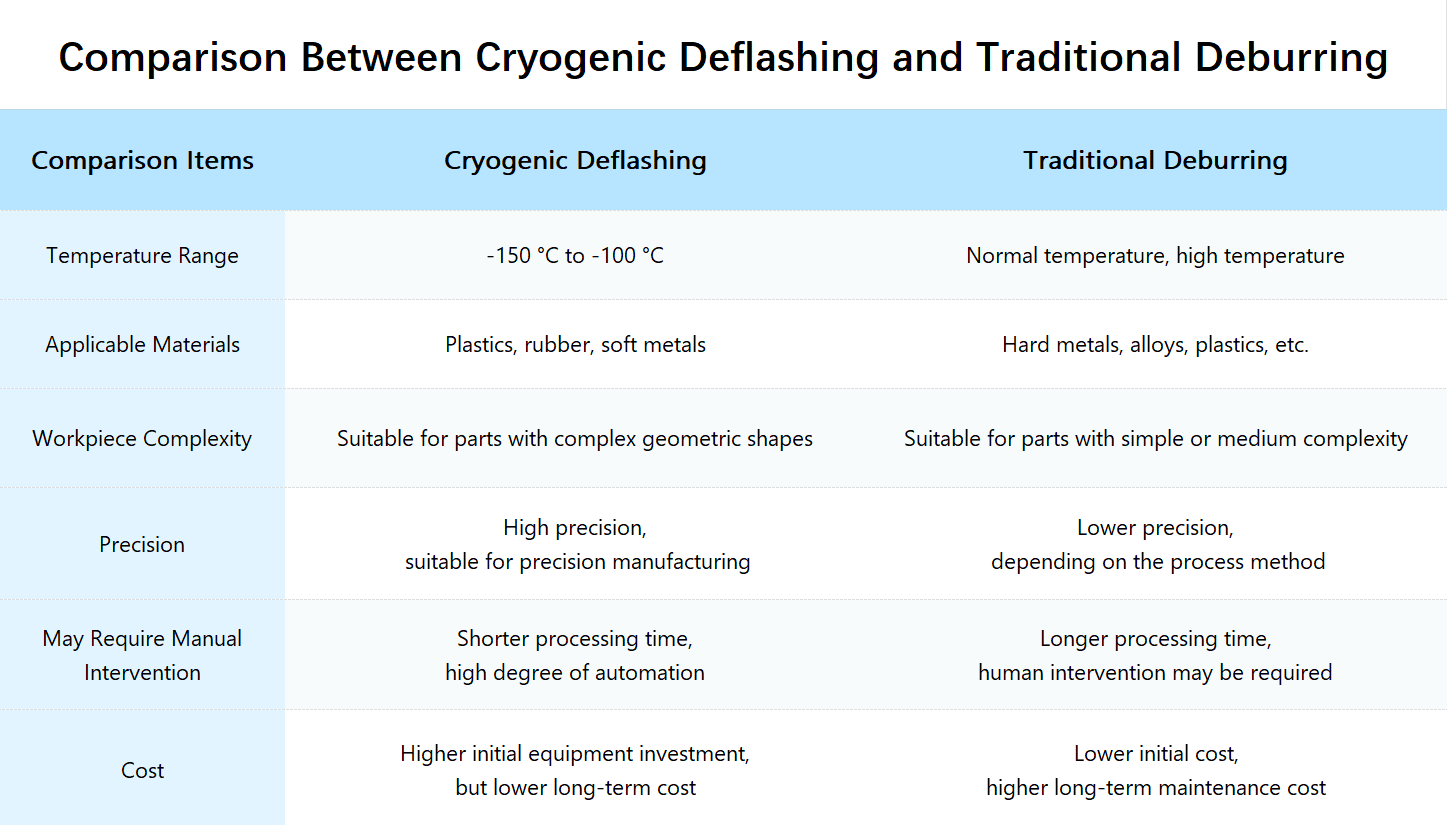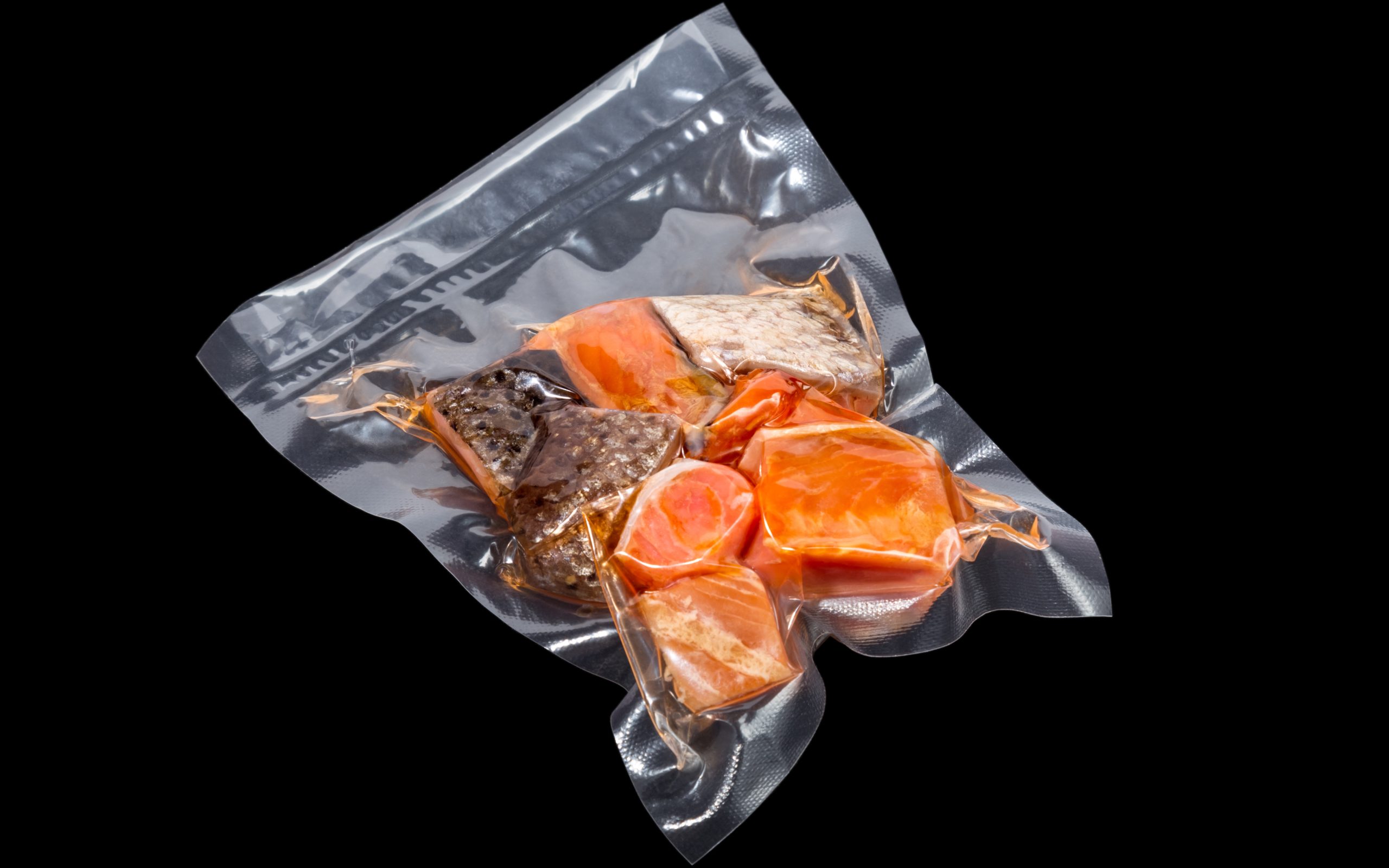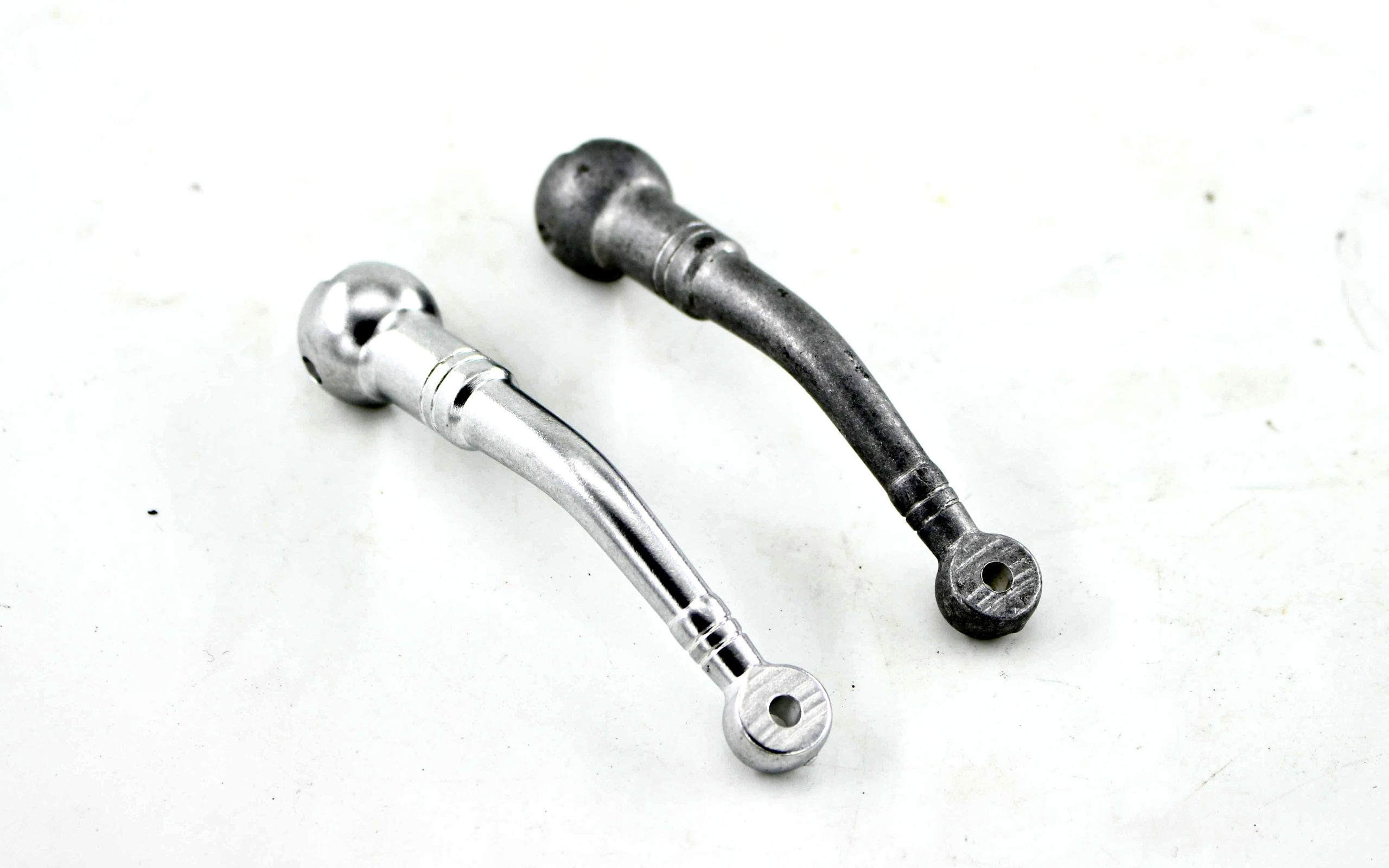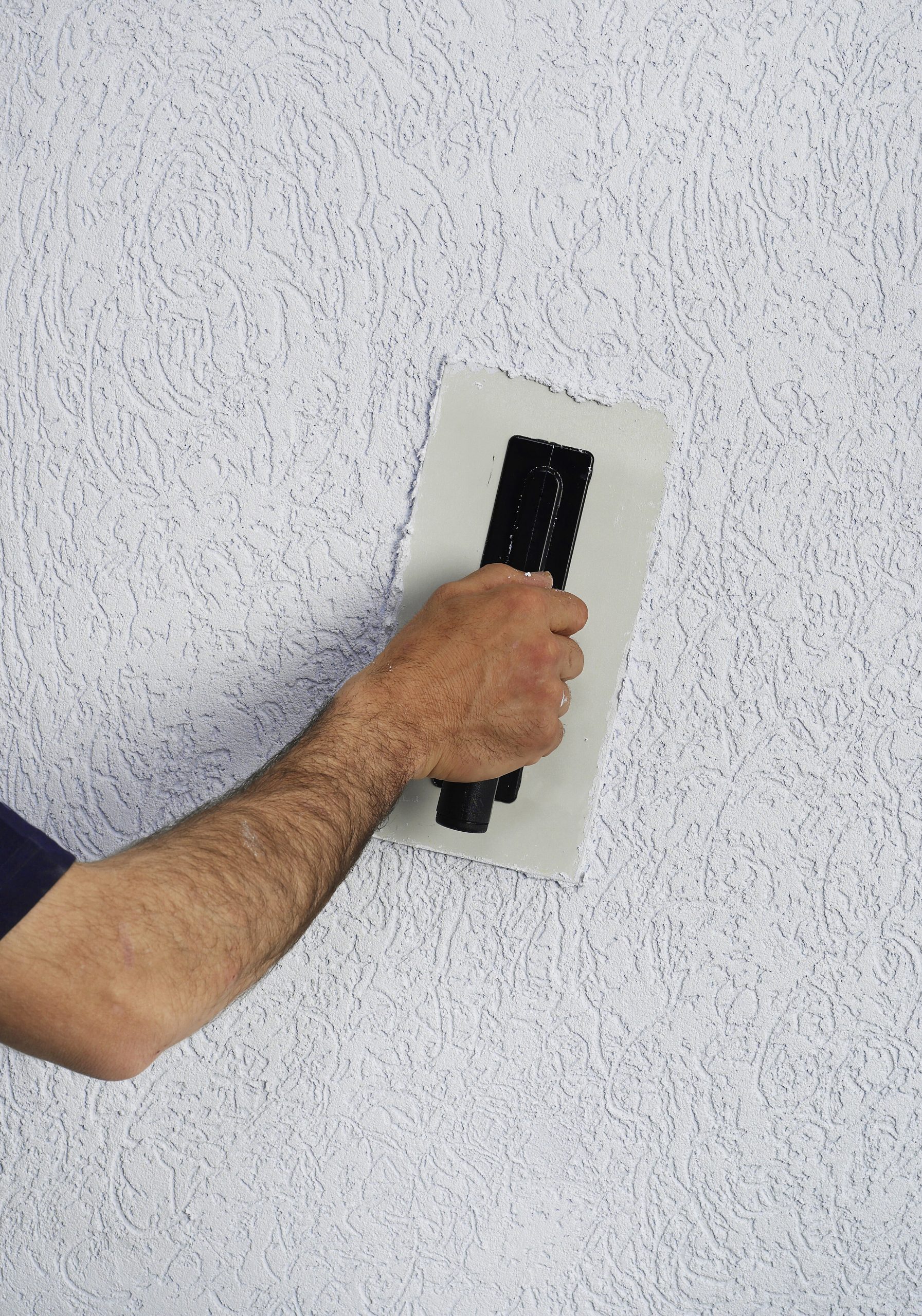¿En qué consiste el proceso de desbarbado criogénico?
19 de septiembre de 2024

En la fabricación moderna, el desbarbado o desbarbado es un paso importante para garantizar la precisión y calidad del producto. Ya se trate de piezas de automoción, componentes electrónicos u otros productos industriales, los problemas de rebabas siempre han acosado a los fabricantes. Las rebabas no sólo afectan al aspecto del producto, sino que también pueden provocar un mal funcionamiento de los dispositivos mecánicos e incluso acortar la vida útil del producto. Por lo tanto, la forma de eliminar las rebabas de manera eficaz y económica se ha convertido en un foco de atención en la industria manufacturera. Con el continuo avance de la tecnología, una innovadora tecnología de desbarbado ha llegado gradualmente a la opinión pública: el proceso de desbarbado criogénico. En comparación con los procesos de desbarbado tradicionales, esta tecnología se ha convertido gradualmente en una parte indispensable de la automatización industrial y la fabricación de precisión debido a su alta eficiencia y precisión. En este artículo, presentaremos el proceso de desbarbado criogénico en detalle, exploraremos su principio de funcionamiento, las diferencias con los procesos tradicionales, los materiales aplicables y sus ventajas en la fabricación.
¿En qué consiste el proceso de desbarbado criogénico?
Definición
Como su nombre indica, el proceso de desbarbado criogénico es una tecnología que elimina las rebabas por medios físicos tras enfriar la pieza a una temperatura extremadamente baja. El principio consiste en enfriar el material hasta un estado quebradizo, de modo que las rebabas de su superficie se vuelvan quebradizas y, a continuación, estas rebabas se eliminen fácilmente mediante vibración mecánica u otros métodos físicos. El medio de enfriamiento habitual es el nitrógeno líquido, que puede enfriar rápidamente el material hasta una temperatura baja cercana a 150°C bajo cero, consiguiendo así un efecto de desbarbado ideal.
El desbarbado criogénico es especialmente adecuado para algunos materiales sensibles al calor, como plásticos, silicona y ciertos metales blandos. Estos materiales se deforman o dañan fácilmente a altas temperaturas, y los métodos tradicionales de desbarbado mecánico o químico son difíciles de manejar con precisión, mientras que los procesos a baja temperatura pueden evitar estos problemas y lograr el propósito del desbarbado manteniendo la forma y el rendimiento de la pieza.
Principio de funcionamiento
Incluye principalmente tres pasos: enfriamiento, endurecimiento y eliminación mecánica:
- Refrigeración: En primer lugar, la pieza pretratada se coloca en un entorno de baja temperatura, normalmente una caja de refrigeración de nitrógeno líquido, que puede enfriar rápidamente la pieza hasta una temperatura cercana a 150 °C bajo cero.
- Fresas de endurecimiento: A bajas temperaturas, las rebabas del material se vuelven frágiles, mientras que la estructura principal permanece relativamente estable. Debido a los diferentes coeficientes de dilatación térmica de los distintos materiales, la parte de rebaba de la superficie de la pieza suele volverse quebradiza antes que el material principal, lo que la hace más frágil.
- Extracción mecánica: Las rebabas astilladas se desprenderán de forma natural mediante vibración mecánica u otro tipo de estimulación física leve (como granallado mecánico o impacto de flujo de aire). Este proceso es muy preciso y no daña la superficie ni la forma de la pieza, lo que resulta especialmente adecuado para piezas con elevados requisitos de acabado superficial.
- Limpieza e inspección: Tras el desbarbado, la superficie de la pieza se limpia de nuevo para eliminar los restos u otras impurezas y garantizar que la pieza alcanza el acabado y la precisión esperados.
- Inspección de calidad: Entre los métodos de inspección habituales se incluyen la inspección microscópica, la inspección visual o los instrumentos de medición de superficies para detectar la planitud y el acabado de la superficie de la pieza y garantizar que se han eliminado todas las rebabas y que la pieza no ha sufrido ningún otro daño.
Propósito
El principal objetivo del desbarbado criogénico es eliminar las rebabas de forma eficaz y no destructiva para garantizar la precisión, el acabado superficial y la vida útil de la pieza. Otro objetivo importante es ahorrar tiempo y costes. El desbarbado criogénico tiene un alto grado de automatización y puede procesar un gran número de piezas a la vez, por lo que tiene una alta eficiencia en la producción en masa. Además, al no producirse un desgaste excesivo de la superficie de la pieza ni cambios en la estructura del material, pueden simplificarse los pasos de procesamiento posteriores, con lo que se ahorran aún más costes de producción.
Ventajas
- Alta precisión
Dado que la tecnología de desbarbado criogénico se basa en las diferencias de temperatura para fragilizar las rebabas, no causa ningún daño al cuerpo de la pieza. Esto significa que incluso piezas muy delicadas (como componentes electrónicos o dispositivos médicos) pueden mantener su forma y tamaño. Esta tecnología de desbarbado de alta precisión mejora enormemente la tasa de cualificación del producto.
- Adecuado para geometrías complejas
En comparación con el desbarbado mecánico tradicional, el desbarbado criogénico puede manejar fácilmente algunas estructuras de piezas complejas, como ranuras, hendiduras, agujeros diminutos, etc. Estas piezas suelen ser difíciles de manipular con los métodos mecánicos tradicionales, mientras que el proceso de desbarbado criogénico elimina las rebabas mediante el enfriamiento con nitrógeno líquido y la vibración, sin verse limitado por las formas geométricas.
- Gran adaptabilidad de los materiales
El desbarbado criogénico es adecuado para procesar diversos materiales, especialmente los sensibles al calor. Por ejemplo, los plásticos, las materias plásticas y algunos metales blandos se deforman o dañan fácilmente bajo altas temperaturas o una fuerte acción mecánica, mientras que el proceso de desbarbado criogénico puede eliminar rebabas sin calentar ni aplicar demasiada presión mecánica, conservando las propiedades físicas y químicas originales del material.
- Eficaz y automatizado
Todo el proceso de desbarbado criogénico puede ser altamente automatizado. La pieza sólo necesita pasar por unos pocos pasos en la máquina, como enfriamiento, vibración y limpieza, para completar la operación de desbarbado. Se puede procesar un gran número de piezas a la vez, lo que mejora enormemente la eficacia de la producción y es especialmente adecuado para la producción en serie.
- Ahorro de costes
Aunque la inversión inicial en equipos para el desbarbado criogénico puede ser elevada, a largo plazo, el coste de utilización de esta tecnología es bajo. Debido al alto grado de automatización del proceso, no se requiere una gran cantidad de intervención manual, y el tiempo de procesamiento es corto y eficiente, el coste unitario de procesamiento de cada pieza de trabajo es bajo.
- Gran protección del medio ambiente
El desbarbado criogénico utiliza nitrógeno líquido, que es un material respetuoso con el medio ambiente, no tóxico, inocuo y reciclable. En comparación con algunos métodos de desbarbado químico, no produce gases de escape nocivos, aguas residuales ni otros contaminantes. No sólo es respetuoso con el medio ambiente, sino que también cumple las normativas de protección medioambiental, cada vez más estrictas.
Diferencias con los procesos de desbarbado tradicionales

La principal diferencia radica en la temperatura y los métodos de tratamiento. Los procesos tradicionales suelen basarse en el corte mecánico, el rectificado, el tratamiento químico o el tratamiento a alta temperatura, que funcionan bien con materiales duros, pero suelen tener limitaciones al procesar materiales blandos o de estructura compleja.
El desbarbado criogénico endurece las rebabas por enfriamiento y luego las elimina con suavidad. En cambio, no produce tensiones térmicas ni mecánicas significativas, por lo que no afecta a las propiedades intrínsecas del material. Además, el proceso de desbarbado criogénico también es adecuado para procesar piezas con geometrías complejas, como ranuras, hendiduras y otras zonas difíciles de desbarbar mecánicamente. Otra ventaja es que la velocidad y la precisión del proceso de desbarbado criogénico también son superiores a los procesos tradicionales de desbarbado mecánico o químico.
Tipos de procesos de desbarbado tradicionales
- Desbarbado mecánico: Las rebabas se eliminan mediante herramientas manuales o automáticas de corte, esmerilado o pulido. Las ventajas son un funcionamiento sencillo y un bajo coste del equipo, pero en el caso de piezas con formas complejas, los métodos mecánicos a menudo no pueden cubrir todas las zonas. Además, el desbarbado mecánico puede causar cierto grado de arañazos o deformaciones en la superficie de la pieza.
- Desbarbado térmico: Las rebabas se funden o evaporan a alta temperatura (normalmente quemándolas), lo que resulta adecuado para algunos materiales resistentes a altas temperaturas. Este método es adecuado para procesar rebabas de gran superficie, pero el rango de desbarbado no puede controlarse con precisión y puede afectar a las propiedades mecánicas del propio material.
- Desbarbado electroquímico (ECM): Las rebabas se eliminan mediante electrolito y corriente eléctrica. Su ventaja es que la profundidad de desbarbado puede controlarse con precisión, y es adecuado para procesar materiales metálicos de gran dureza, pero el equipo es caro y la velocidad de procesamiento es lenta.
- Desbarbado químico: Las rebabas se corroen y se eliminan con soluciones ácidas o alcalinas. Es adecuado para algunas piezas pequeñas de precisión, pero la corrosividad de la solución puede tener un efecto adverso en el cuerpo principal del material.

Comparación de la aplicabilidad con otros procesos
El desbarbado criogénico presenta ventajas significativas sobre otros procesos de desbarbado, especialmente en el tratamiento de piezas de alta precisión y geometrías complejas. El análisis comparativo de la siguiente tabla puede ayudarle a comprender sus diferencias de forma más intuitiva.

Materiales adecuados para el desbarbado criogénico
La singularidad de la tecnología de desbarbado criogénico es que puede procesar materiales difíciles de desbarbar mediante procesos tradicionales, especialmente en aplicaciones con requisitos de alta precisión. A continuación se indican varios materiales comunes utilizados en el desbarbado criogénico:
Caucho y elastómeros
El caucho y los elastómeros son difíciles de procesar con los métodos tradicionales de desbarbado mecánico debido a sus propiedades blandas y resistentes. Estos materiales suelen utilizarse para bandas de sellado de automóviles, juntas de equipos electrónicos, piezas blandas de dispositivos médicos, etc.
- Propiedades físicas: Los materiales de caucho y elastómeros se vuelven quebradizos rápidamente a bajas temperaturas, y las rebabas son más fáciles de arrancar sin dañar la estructura principal.
- Propiedades químicas: Estos materiales no sufren cambios químicos en entornos de baja temperatura y pueden recuperar su elasticidad original.
- Escenarios de aplicación: La industria del automóvil, la industria electrónica, la fabricación de equipos médicos, etc. requieren piezas de alta precisión, que suelen ser las principales áreas de aplicación de los procesos de desbarbado criogénico.
Termoplásticos
Los termoplásticos incluyen ABS, polietileno (PE), polipropileno (PP), etc., que se utilizan ampliamente en artículos de primera necesidad, dispositivos médicos, carcasas electrónicas, accesorios de automoción y otros campos. Estos materiales suelen ser blandos y es fácil que generen pequeñas rebabas durante el proceso de producción.
- Propiedades físicas: Los termoplásticos pueden enfriarse rápidamente en entornos de baja temperatura y las rebabas se vuelven quebradizas, por lo que éstas pueden retirarse sin dañar la estructura principal.
- Propiedades químicas: El tratamiento a baja temperatura no modifica las propiedades químicas de estos materiales, por lo que se mantienen la solidez, la resistencia química, la resistencia al calor y otras propiedades de los materiales.
- Escenarios de aplicación: La tecnología de desbarbado criogénico se utiliza ampliamente en piezas de plástico, como carcasas de productos electrónicos, piezas interiores de automóviles, envases alimentarios, etc.
Metales blandos
Los metales blandos, como el aluminio y el magnesio, se utilizan a menudo en la industria aeroespacial, la fabricación de automóviles, los instrumentos de precisión y otros campos. Dado que estos metales son sensibles a la temperatura y a las tensiones mecánicas, los métodos tradicionales de desbarbado mecánico pueden provocar fácilmente deformaciones o daños en la pieza.
- Propiedades físicas: Los metales blandos no se vuelven quebradizos a bajas temperaturas, pero la dureza de la rebaba disminuye, por lo que puede eliminarse fácilmente mediante vibración mecánica o impacto del flujo de aire.
- Propiedades químicas: La baja temperatura no modifica las propiedades químicas de los metales, por lo que sus propiedades básicas, como la resistencia a la corrosión y la solidez, permanecen inalteradas.
- Escenarios de aplicación: En las industrias de procesamiento de metales de alta demanda, como las piezas de aviación, las piezas de automoción y los instrumentos de precisión, se suelen utilizar procesos de desbarbado criogénico para garantizar la alta precisión de las piezas de trabajo.
Materiales compuestos
Los materiales compuestos se utilizan ampliamente en sectores como la aviación, la automoción y el equipamiento deportivo, especialmente en algunas piezas con requisitos de gran resistencia y ligereza.
- Propiedades físicas: Los materiales compuestos se mezclan con distintos materiales y tienen fuertes propiedades mecánicas, pero su compleja estructura dificulta la eliminación de rebabas. El proceso de desbarbado criogénico puede procesar eficazmente estos materiales sin afectar a su resistencia estructural.
- Propiedades químicas: La baja temperatura no afectará a la estabilidad química de los materiales compuestos, garantizando su resistencia a la corrosión y al desgaste en el entorno de uso.
- Escenarios de aplicación: Las aplicaciones de alta precisión y alta resistencia, como la industria aeroespacial, la fabricación de automóviles y los equipos deportivos, son áreas ideales para el desbarbado criogénico.

Tendencias futuras en el desbarbado criogénico
Innovación tecnológica continua
- Optimización de la tecnología de refrigeración
- Desarrollar medios y sistemas de refrigeración más eficientes para mejorar aún más la velocidad y uniformidad del enfriamiento y reducir el consumo de energía. Por ejemplo, investigar nuevas tecnologías de inyección de nitrógeno líquido o de mezcla de gases criogénicos para lograr un control más preciso de la temperatura y un efecto de enfriamiento más rápido.
- Explorar la aplicación de otras fuentes de refrigeración criogénica, como el dióxido de carbono líquido o el nitrógeno criogénico, para satisfacer las necesidades de diferentes materiales y procesos.
- Mejora de los métodos de desbarbado
- Combine la tecnología avanzada de vibración mecánica, la tecnología ultrasónica o la tecnología láser para mejorar la eficacia y la precisión del desbarbado. Por ejemplo, utilice la vibración ultrasónica combinada con la refrigeración criogénica para mejorar el efecto de fragilización y desprendimiento de rebabas; o utilice el desbarbado asistido por láser para eliminar con precisión rebabas en piezas específicas.
- Desarrollar equipos de desbarbado inteligentes que puedan ajustar automáticamente los parámetros del proceso en función del material, la forma y el tamaño de la pieza para conseguir soluciones de desbarbado personalizadas.
Ampliación del campo de aplicación
- Aplicaciones industriales emergentes
- Con el rápido desarrollo de industrias emergentes como la de los vehículos de nueva energía, la aeroespacial y la de la información electrónica, la demanda de piezas de alta precisión y calidad es cada vez mayor. La tecnología de desbarbado criogénico se utilizará cada vez más en estos campos, como los componentes de baterías de vehículos de nueva energía, los álabes de motores de aviación y el embalaje de chips electrónicos.
- En industrias como la de los dispositivos médicos y los instrumentos ópticos, que tienen unos requisitos de calidad superficial extremadamente altos, la tecnología de desbarbado criogénico también desempeñará un papel importante para garantizar la seguridad y fiabilidad de los productos.
- Tratamiento de materiales complejos
- Para cada vez más materiales compuestos nuevos, nanomateriales y materiales funcionales, los métodos tradicionales de desbarbado a menudo no pueden cumplir los requisitos. La tecnología de desbarbado criogénico seguirá ampliando su gama de materiales aplicables, desarrollando soluciones de desbarbado especiales para estos materiales complejos y mejorando el rendimiento de procesamiento y el rendimiento de uso de los materiales.
Verde y sostenible
- Medio refrigerante respetuoso con el medio ambiente
- Seguir investigando y promoviendo la aplicación de medios de refrigeración ecológicos para reducir el impacto sobre el medio ambiente. Por ejemplo, desarrollar refrigerantes criogénicos biodegradables o utilizar tecnología de refrigeración por circulación de aire para reducir la dependencia de medios de refrigeración tradicionales como el nitrógeno líquido.
- Reforzar el reciclaje y la reutilización de los medios de refrigeración, mejorar la utilización de los recursos y reducir los costes de producción.
- Ahorro de energía y reducción de emisiones
- Optimizar el consumo de energía del proceso de desbarbado criogénico y alcanzar el objetivo de ahorro energético y reducción de emisiones mejorando el diseño de los equipos y la eficiencia de conversión de la energía. Por ejemplo, utilice materiales aislantes eficientes para reducir la pérdida de calor, o utilice tecnología de recuperación de calor residual para reutilizar el calor generado durante el proceso de desbarbado.
Desarrollo en colaboración con la industria
- Integración de la cadena industrial ascendente y descendente
- El proceso de desbarbado criogénico se integrará estrechamente con las industrias anteriores y posteriores, como la investigación y el desarrollo de materiales, la fabricación de equipos y el procesamiento de piezas, para formar una cadena industrial de desarrollo colaborativo. Mediante la investigación y el desarrollo conjuntos y la innovación tecnológica, se mejorará la competitividad y el valor añadido de toda la industria.
- Reforzar la cooperación con las asociaciones industriales, instituciones de investigación científica y empresas pertinentes para promover la normalización y estandarización del proceso de desbarbado criogénico y fomentar el desarrollo sano y ordenado de la industria.
- Integración inteligente de la fabricación
- Con el desarrollo continuo de la tecnología de fabricación inteligente, el proceso de desbarbado criogénico se integrará profundamente con la automatización, la digitalización y la tecnología inteligente. Realiza funciones como el control totalmente automatizado del proceso de producción, la supervisión y el análisis de datos en tiempo real y el diagnóstico remoto de fallos, y mejora la eficiencia de la producción y la estabilidad de la calidad.
- Utilice la tecnología de big data e inteligencia artificial para optimizar y predecir el proceso de desbarbado, descubrir posibles problemas con antelación y tomar las medidas correspondientes para reducir los costes y riesgos de producción.
En el futuro, con el avance de la ciencia y la tecnología y el crecimiento de la demanda en la industria manufacturera, se espera que la tecnología de desbarbado criogénico desempeñe un papel más importante en más campos. No sólo mejora la calidad del producto, sino que también mejora aún más la eficiencia de la producción al tiempo que garantiza la protección del medio ambiente. El desarrollo de esta tecnología ayudará sin duda a la industria manufacturera a avanzar hacia una nueva era de mayor precisión y eficiencia.
Filtros














